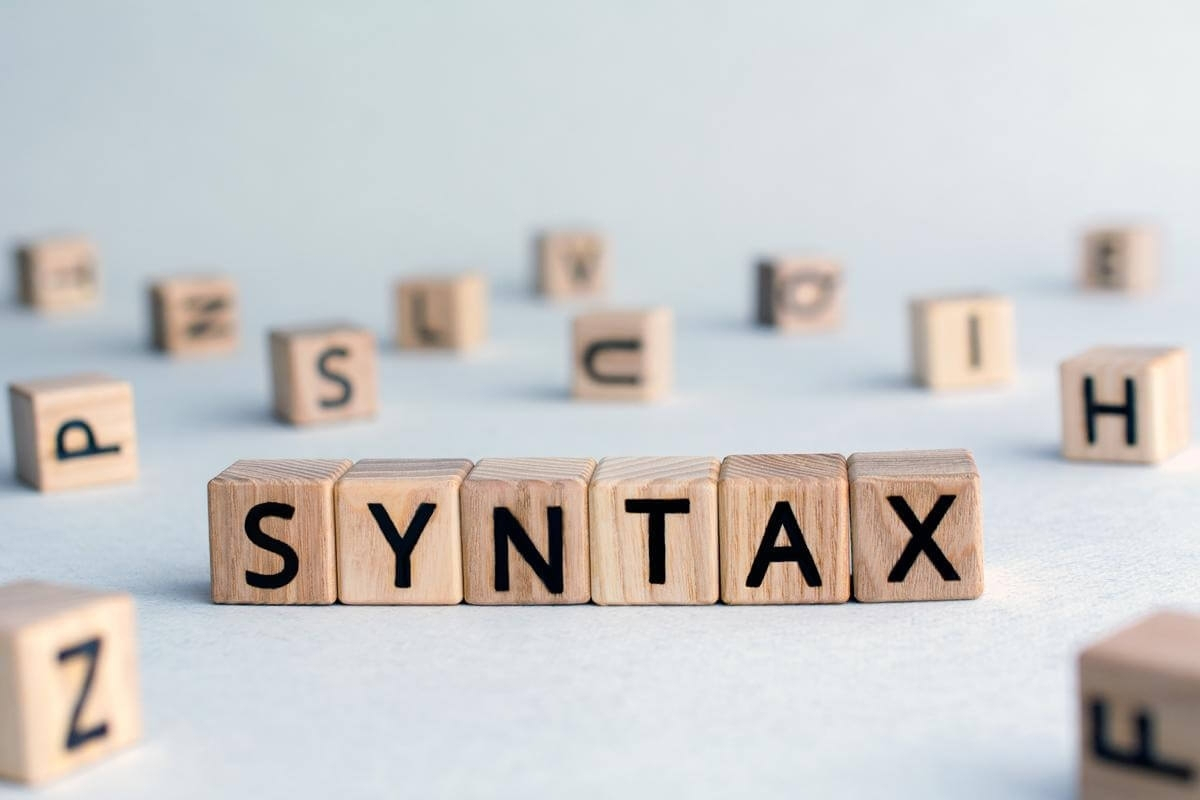
Syntax is the set of rules that dictates how words are arranged to form sentences in a language. Ever wondered why sentences in English follow a specific order? That's syntax at work! It helps us understand each other clearly. Without it, our sentences would be a jumbled mess. For example, "The cat chased the mouse" makes sense, but "Chased the mouse the cat" does not. Syntax varies across languages, making each unique. Some languages place verbs at the end of sentences, while others put them in the middle. Understanding syntax can improve your writing and speaking skills. Ready to learn more? Let's dive into 29 fascinating facts about syntax!
What is Syntax?
Syntax is the set of rules that governs the structure of sentences in a language. It determines how words combine to form phrases, clauses, and sentences. Understanding syntax is crucial for mastering any language.
-
Syntax comes from the Greek word "syntaxis," meaning "arrangement" or "order."
-
Every language has its own syntax rules, which can vary significantly from one language to another.
-
Syntax helps convey meaning by organizing words in a specific order.
Basic Components of Syntax
Syntax involves several key components that work together to form coherent sentences. These components include subjects, predicates, objects, and more.
-
Subject: The subject is the person, place, thing, or idea that performs the action in a sentence.
-
Predicate: The predicate tells what the subject does or is. It includes the verb and any objects or modifiers.
-
Object: Objects receive the action of the verb. They can be direct or indirect.
-
Clauses: Clauses are groups of words that contain a subject and a predicate. They can be independent or dependent.
-
Phrases: Phrases are groups of words that act as a single part of speech but do not contain both a subject and a predicate.
Types of Sentences
Sentences can be categorized based on their structure and purpose. Each type serves a different function in communication.
-
Declarative Sentences: These sentences make a statement and end with a period.
-
Interrogative Sentences: These sentences ask a question and end with a question mark.
-
Imperative Sentences: These sentences give a command or request and usually end with a period.
-
Exclamatory Sentences: These sentences express strong emotion and end with an exclamation mark.
Syntax in Different Languages
Different languages have unique syntax rules that can make learning a new language challenging but also fascinating.
-
In English, the typical sentence structure is Subject-Verb-Object (SVO).
-
Japanese often uses a Subject-Object-Verb (SOV) structure.
-
Arabic syntax can be Verb-Subject-Object (VSO).
-
Some languages, like Latin, have flexible word order due to inflectional endings.
Syntax and Grammar
While syntax focuses on sentence structure, grammar encompasses a broader range of rules, including syntax, morphology, and phonology.
-
Syntax is a subset of grammar, specifically dealing with sentence structure.
-
Morphology studies the structure of words and how they are formed.
-
Phonology examines the sound systems of languages.
Syntax in Programming
In programming, syntax refers to the rules that define the structure of code. Each programming language has its own syntax.
-
Incorrect syntax in code can lead to errors and bugs.
-
Programming languages like Python and JavaScript have different syntax rules.
-
Syntax highlighting in code editors helps programmers identify errors.
Syntax and Semantics
Syntax and semantics are closely related but distinct concepts. Syntax is about structure, while semantics is about meaning.
-
Syntax determines how words and phrases are arranged.
-
Semantics focuses on the meaning of words and sentences.
-
A sentence can be syntactically correct but semantically nonsensical, like "Colorless green ideas sleep furiously."
The Role of Syntax in Communication
Syntax plays a crucial role in effective communication, ensuring that sentences are clear and understandable.
-
Proper syntax helps avoid ambiguity and confusion.
-
Misplaced modifiers can lead to humorous or confusing sentences.
-
Syntax helps convey emphasis and tone in writing.
Fun Facts About Syntax
Syntax isn't just a dry set of rules; it can be fascinating and fun to explore.
- Palindromes, like "A man, a plan, a canal, Panama," have interesting syntactic structures.
Final Thoughts on Syntax
Syntax shapes how we communicate, making it a crucial part of language. Understanding syntax helps us grasp the structure of sentences, which improves both writing and speaking skills. It’s fascinating how different languages have unique syntax rules, yet they all serve the same purpose: clear communication. Whether you’re learning a new language or refining your native tongue, paying attention to syntax can make a big difference. From subject-verb agreement to the placement of adjectives, these rules guide us in constructing meaningful sentences. So next time you write or speak, remember the importance of syntax. It’s the backbone of effective communication, helping us convey our thoughts clearly and accurately. Keep exploring and practicing, and you’ll find that mastering syntax opens up new doors in your linguistic journey.
Was this page helpful?
Our commitment to delivering trustworthy and engaging content is at the heart of what we do. Each fact on our site is contributed by real users like you, bringing a wealth of diverse insights and information. To ensure the highest standards of accuracy and reliability, our dedicated editors meticulously review each submission. This process guarantees that the facts we share are not only fascinating but also credible. Trust in our commitment to quality and authenticity as you explore and learn with us.
